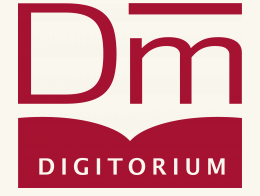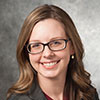This article is more than 5 years old.
Digitorium is an annual Digital Humanities conference hosted by the University of Alabama. The conference website explains that the name, Digitorium, “was inspired by the Medieval scriptorium as an early center for the creation, visualization, and dissemination of knowledge.” It is aptly named, as the conference brought together DH practitioners across disciplines to showcase DH projects, to report on works in progress, and to generate new ideas for DH in teaching, research, and public humanities projects. This year’s theme was “Connecting the Physical and the Digital.”

This was my first time attending Digitorium, and I was delighted with the array of projects and perspectives at this conference. Along with Stephanie Pellet, I presented, “Tout le Monde: A Collaborative Pro-ject/ -cess,” which outlined our work developing Tout le Monde, a French language-learning platform that utilizes digital tools for active learning and social pedagogies. In its current iteration, Tout le Monde is organized as an interactive textbook. Earlier iterations organized the platform around the various digital projects assigned to the students. Stéphanie and I have found that the textbook model situates the digital assignments within the context of the skills acquired in each chapter, avoiding the impression that the digital platform is an “add on” or an afterthought. Our presentation discussed our stages of development over the past three years and the improvements Stéphanie saw in her students’ confidence and fluency as a result of using the platform. Additionally, we included a toolkit for building your own interactive platform in the slide deck we shared with the audience. The toolkit includes links to the web annotation tools Kami and Hypothes.is; a Remove Dashboard Access WordPress plugin, which allows students to post blogs without logging in; and the code for the TruCollector WordPress theme, which we use for the audio and written blog pages.
Dr. Sarah Ketchley (University of Washington) gave a plenary address on her work developing Newbook Digital Texts, an innovative DH publishing house out of the University of Washington that re-imagines and restructures traditional academic research and publication. Newbook came about through Dr. Ketchley’s research in Egyptology, specifically through her work digitizing primary source material, transcribing texts, and creating digital maps and other visualizations with the data and metadata generated in creating web exhibits and marking texts up using TEI/XML. Newbook offers an internship program to students at the University of Washington, which pairs training in historical and literary research methods with digital competencies.
I was fascinated to hear about one student’s work developing the Historical Markup Tool in conjunction with her work as a Research Assistant on Dr, Ketchley’s Emma B. Andrews Project. Developed in 2019 by Audrey Holmes as part of her Master’s Thesis in Computational Linguistics, the Historical Markup Tool ingests raw textual data, identifies specific entities, and generates TEI output that tags those entities. This tool will be used in future stages of the Emma B. Andrews Project, which transcribes, tags, and analyzes a collection of Nile travel journals written by Emma B. Andrews. Andrews took many trips to Egypt between 1889 and 1912 with archeologist and art antiquities collector, Theodore M. Davis. The journals are important because they reveal new information about Davis’s excavations of tombs in the Valley of Kings.
Another presentation that highlighted student contributions to faculty-led research projects was “Learning/Teaching R to Analyze a Discipline,” by Nathan Loewen and Jackson Foster (University of Alabama). Nathan Loewen, a faculty member in the Religious Studies department, collaborated with undergraduate researcher Jackson Foster to analyze the philosophy of religion as a discourse. Using JSTOR for Research and R statistical software, they mined scholarly journals to look for patterns and anomalies in discussions about religious studies as a discipline. I was excited to see this case study of a successful research collaboration between a faculty member and undergraduate researcher, as this is a model that Wake Forest encourages through its URECA program, and one that I’d like to emulate in DISC’s support of large DH projects.
Other highlights included The Howard Thurman Archive, an Omeka exhibit which houses the audio and video recordings of theologian, preacher, educator, and civil rights leader Howard Thurman (1899-1981); the Rockefeller Archive Center’s digital storytelling platform (currently in development), which will make archival documents available on the web through narrative formats, rather than through a finding-aid-like list; and a roundtable discussion on Diversity, Equity, and Inclusion with Digital Pedagogy.
I returned from the conference reenergized and with so many good ideas to use as DISC develops the DH resources we offer and our collaborative support model.
Thanks for reading!

6 Comments on ‘Carrie at Digitorium 2019’
I am excited to learn more about the Historical Markup Tool!
Glad to learn how Dr. Pellet’s work has progressed with your aid and also that you were able to share it with others!
Happy you and Stephanie were able to share about your TLM work, and that you gleaned good ideas for bringing to DISC. I am intrigued by the digital storytelling platform as a future goal for DISC and SCA with our collections.
I like that a student was able to work with a faculty member on a text and data mining project. It provides a more tangible example of a concept that can be very abstract.
I spent some time clicking around Tout le Monde. What a great resource! I’m glad you came away with new ideas to implement more of this kind of content!
Sounds like you and Stéphanie had much to share with attendees, and looking forward to what comes of the new tools and projects that have spurred your creativity and connections!